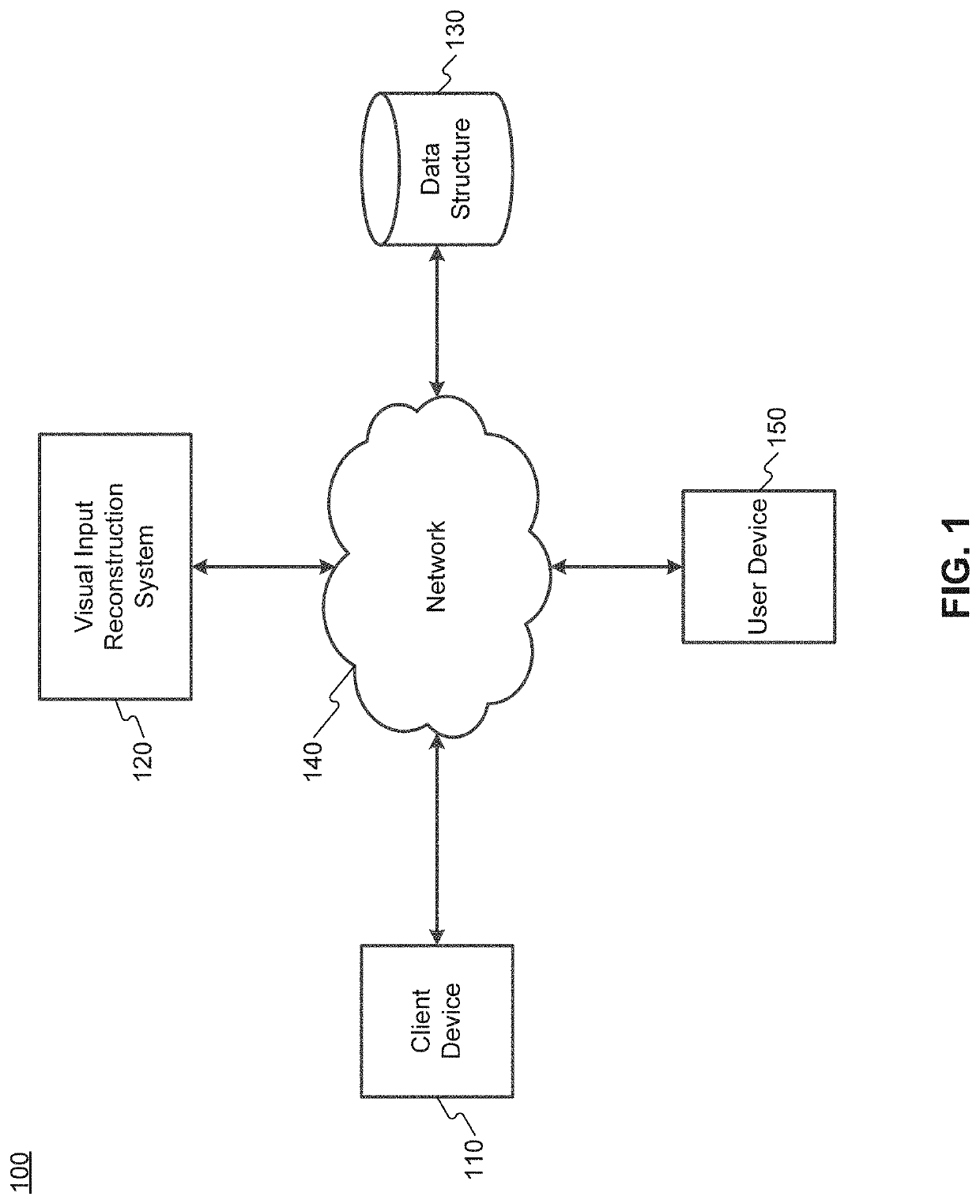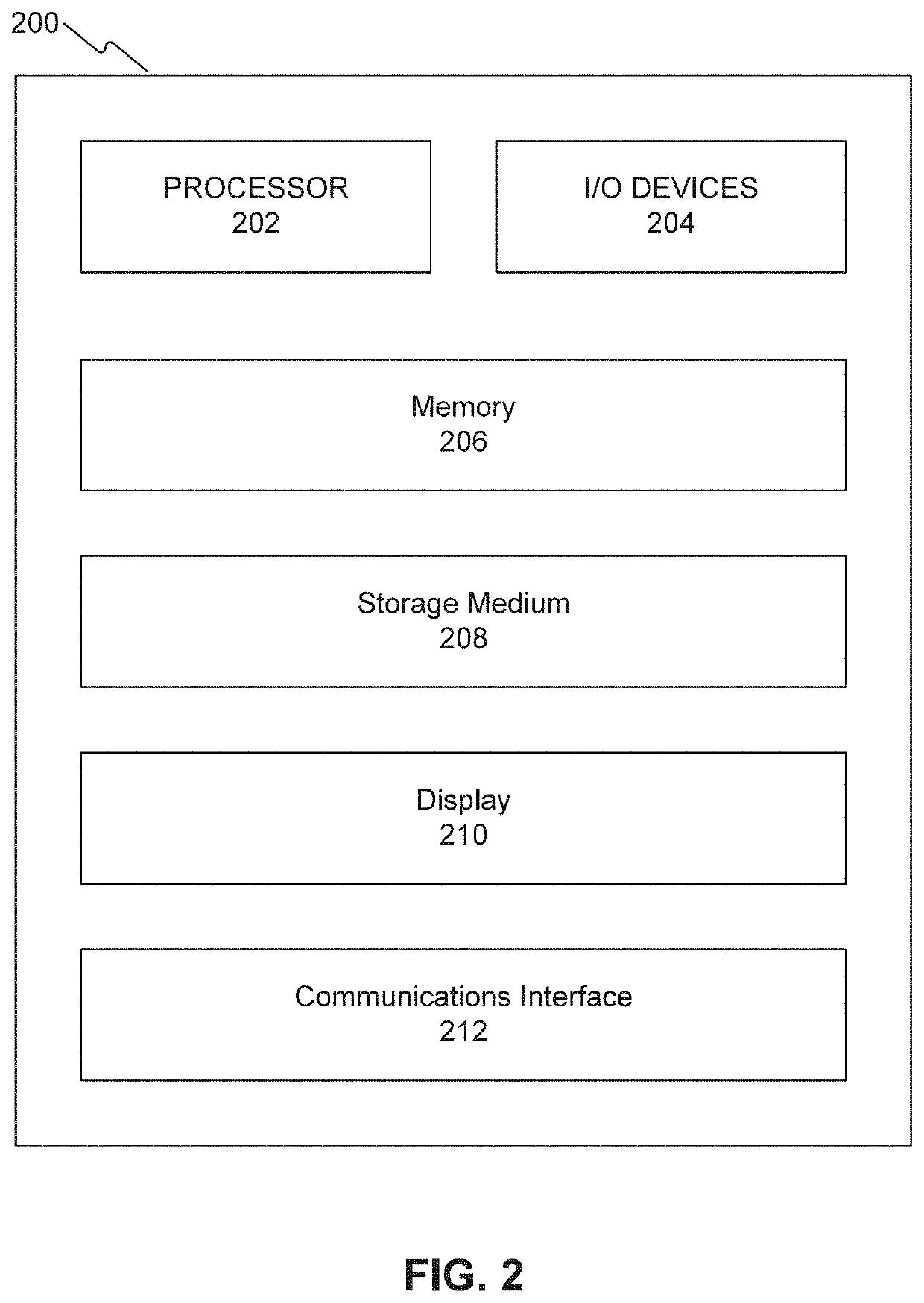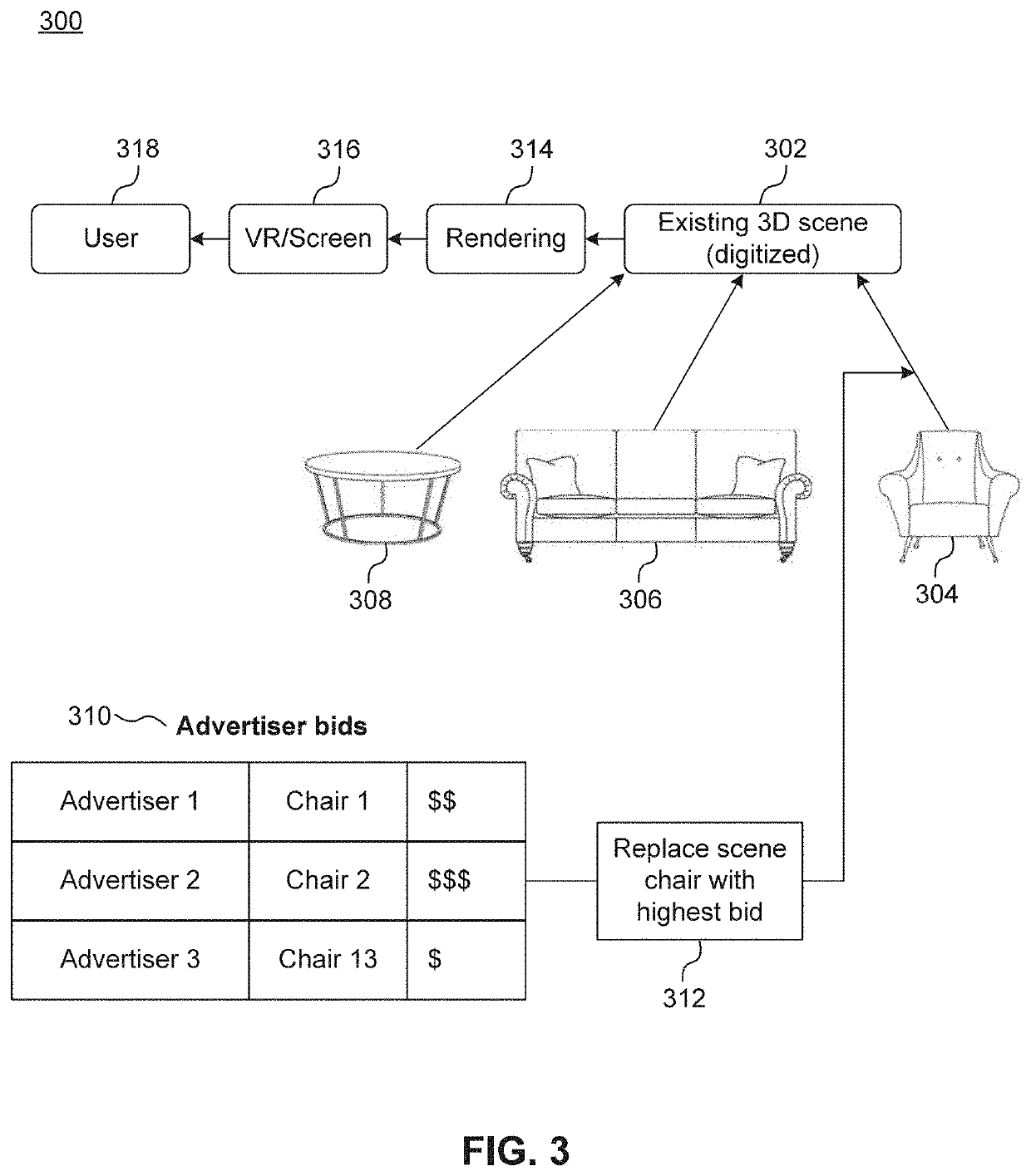Systems and methods for 3D scene augmentation and reconstruction
a two-dimensional (2d) or three-dimensional (3d) scene or image technology, applied in the field of systems and methods for generating, augmenting or reconstructing a two-dimensional (2d) or three-dimensional (3d) scene or image, can solve the problems of conventional approaches that cannot adapt advertisement content to a 2d or 3d environment in a natural manner, conventional approaches may suffer from deficiencies, and conventional approaches may suffer from inability to place advertisements based on the intended audien
- Summary
- Abstract
- Description
- Claims
- Application Information
AI Technical Summary
Benefits of technology
Problems solved by technology
Method used
Image
Examples
Embodiment Construction
[0161]Exemplary embodiments are described with reference to the accompanying drawings. The figures are not necessarily drawn to scale. While examples and features of disclosed principles are described herein, modifications, adaptations, and other implementations are possible without departing from the spirit and scope of the disclosed embodiments. Also, the words “comprising,”“having,”“containing,” and “including,” and other similar forms are intended to be equivalent in meaning and be open ended in that an item or items following any one of these words is not meant to be an exhaustive listing of such item or items, or meant to be limited to only the listed item or items. It should also be noted that as used herein and in the appended claims, the singular forms “a,”“an,” and “the” include plural references unless the context clearly dictates otherwise.
Terms
[0162]Voxel: A voxel may be a closed n-sided polygon (e.g., a cube, a pyramid, or any closed n-sided polygon). Voxels in a scene...
PUM
 Login to View More
Login to View More Abstract
Description
Claims
Application Information
 Login to View More
Login to View More - R&D
- Intellectual Property
- Life Sciences
- Materials
- Tech Scout
- Unparalleled Data Quality
- Higher Quality Content
- 60% Fewer Hallucinations
Browse by: Latest US Patents, China's latest patents, Technical Efficacy Thesaurus, Application Domain, Technology Topic, Popular Technical Reports.
© 2025 PatSnap. All rights reserved.Legal|Privacy policy|Modern Slavery Act Transparency Statement|Sitemap|About US| Contact US: help@patsnap.com



